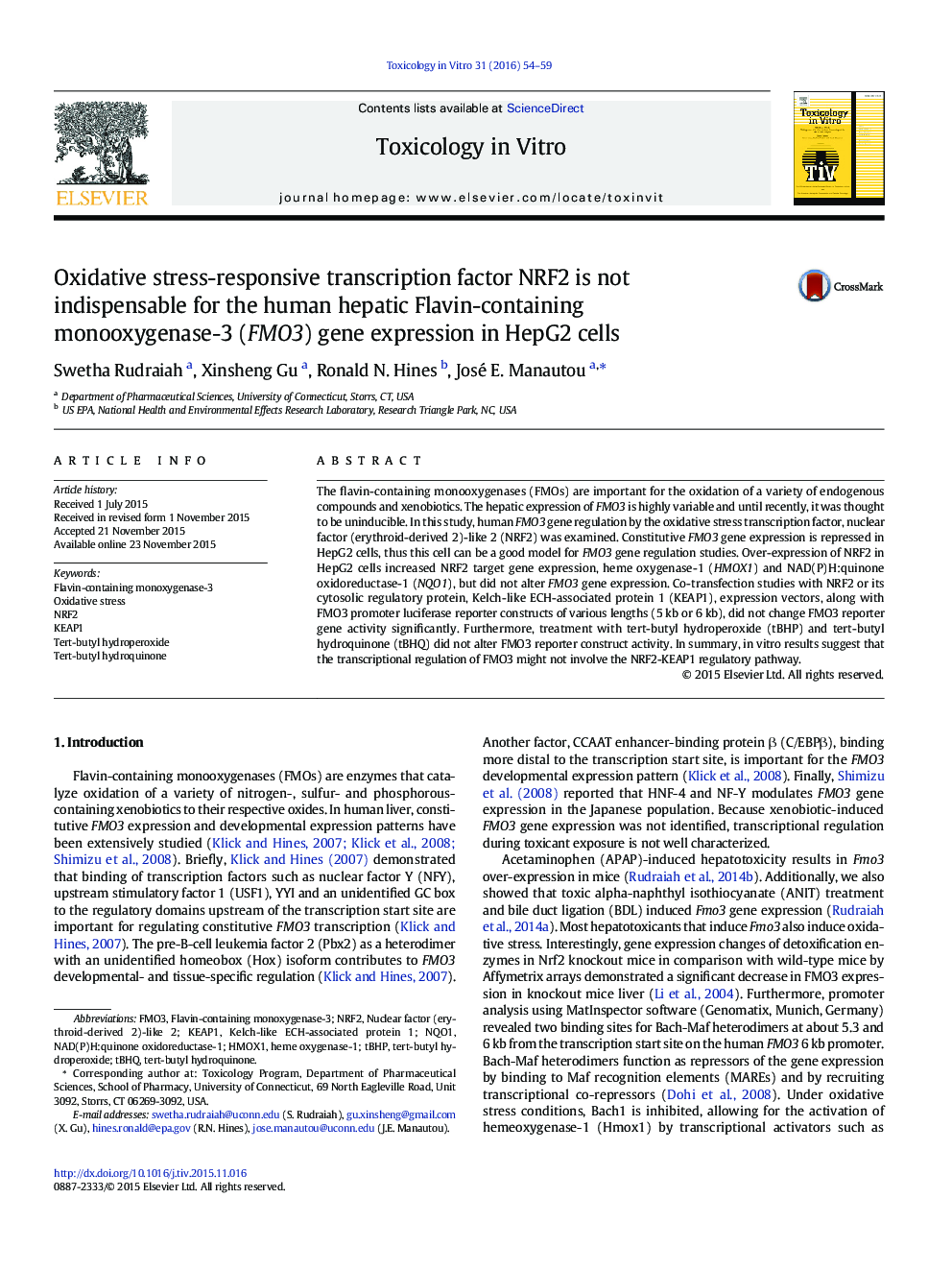| کد مقاله | کد نشریه | سال انتشار | مقاله انگلیسی | نسخه تمام متن |
|---|---|---|---|---|
| 5861188 | 1562714 | 2016 | 6 صفحه PDF | دانلود رایگان |

- FMO3 gene expression by transcription factor NRF2 is investigated.
- NRF2 over-expression did not change FMO3 gene expression in HepG2 cells.
- NRF2 over-expression did not alter FMO3-directed reporter gene activity.
- NRF2 over-expression along with activation did not change reporter gene activity.
- FMO3 transcriptional regulation might not involve NRF2-KEAP1 regulatory pathway.
The flavin-containing monooxygenases (FMOs) are important for the oxidation of a variety of endogenous compounds and xenobiotics. The hepatic expression of FMO3 is highly variable and until recently, it was thought to be uninducible. In this study, human FMO3 gene regulation by the oxidative stress transcription factor, nuclear factor (erythroid-derived 2)-like 2 (NRF2) was examined. Constitutive FMO3 gene expression is repressed in HepG2 cells, thus this cell can be a good model for FMO3 gene regulation studies. Over-expression of NRF2 in HepG2 cells increased NRF2 target gene expression, heme oxygenase-1 (HMOX1) and NAD(P)H:quinone oxidoreductase-1 (NQO1), but did not alter FMO3 gene expression. Co-transfection studies with NRF2 or its cytosolic regulatory protein, Kelch-like ECH-associated protein 1 (KEAP1), expression vectors, along with FMO3 promoter luciferase reporter constructs of various lengths (5Â kb or 6Â kb), did not change FMO3 reporter gene activity significantly. Furthermore, treatment with tert-butyl hydroperoxide (tBHP) and tert-butyl hydroquinone (tBHQ) did not alter FMO3 reporter construct activity. In summary, in vitro results suggest that the transcriptional regulation of FMO3 might not involve the NRF2-KEAP1 regulatory pathway.
Journal: Toxicology in Vitro - Volume 31, March 2016, Pages 54-59